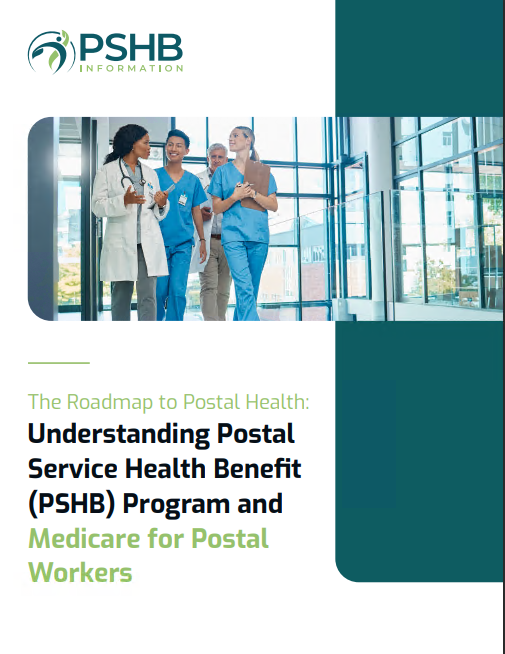Key Takeaways:
-
Open Season enrollment is your once-a-year opportunity to evaluate and choose the best Postal Service Health Benefits (PSHB) plan for your needs, considering changes in coverage, costs, and personal circumstances.
-
Understanding key elements like premiums, deductibles, and coinsurance will help you make an informed decision and avoid unexpected healthcare expenses.
Why Open Season Matters
Every year, Open Season enrollment allows you to reassess your health coverage under the PSHB program. This period typically runs from early November to mid-December, and it’s your chance to enroll, make changes, or confirm your current plan. It’s especially important this year as the PSHB program integrates new features and adjusts plan offerings. Staying proactive ensures that your coverage aligns with your healthcare needs and budget for the upcoming year.
Assess Your Healthcare Needs
Evaluate Your Current Coverage
Start by reviewing your existing PSHB plan. Ask yourself:
-
Did you use all the benefits last year?
-
Were there any unexpected out-of-pocket costs?
-
Did your healthcare needs change due to life events, such as a new medical diagnosis or a growing family?
Understanding your past usage can provide insights into what coverage features are most important for the year ahead.
Consider Your Anticipated Needs
Think about any changes that might occur in the coming year:
-
Routine Care: Will you need more frequent doctor visits?
-
Specialist Care: Are you seeing specialists or managing chronic conditions?
-
Prescriptions: Will you need new medications or increased refills?
This foresight will guide you in choosing a plan that offers adequate benefits.
Compare Plan Costs
Premiums
Premiums vary widely depending on the coverage tier you choose (e.g., Self Only, Self Plus One, or Self and Family). While the government covers around 70% of the total cost, your monthly contribution still matters. Look for a plan that balances affordability with comprehensive coverage.
Deductibles
Deductibles represent the amount you pay before your plan starts covering certain services. Lower-deductible plans might have higher premiums, while high-deductible plans may be paired with Health Savings Accounts (HSAs), offering tax benefits.
Out-of-Pocket Maximums
Check the maximum you might have to pay in a worst-case scenario. This cap is crucial for budgeting, especially if you anticipate significant medical expenses.
Dive into Coverage Details
Coinsurance and Copayments
Understand how much you’ll pay for:
-
Primary Care Visits: Copayments might range between $20 and $40.
-
Specialist Visits: These could cost $30 to $60 per visit.
-
Emergency Services: Copayments can be as high as $150.
Coinsurance percentages for other services could range from 10% to 30% in-network and 40% to 50% out-of-network.
Prescription Drug Coverage
This is particularly important if you’re managing long-term medications. Verify whether your plan includes a formulary that lists covered drugs and tiers for generic, brand-name, and specialty medications.
Understand Medicare Integration
If you’re Medicare-eligible, check how PSHB plans coordinate benefits. Many PSHB plans offer reduced deductibles and waived coinsurance for enrollees with Medicare Part B. Some even reimburse part of the Medicare Part B premium, which can significantly lower overall costs.
Pay Attention to Networks
In-Network Providers
Using in-network doctors and facilities can save you significant money due to negotiated rates. Make sure your preferred healthcare providers are included.
Out-of-Network Costs
Out-of-network services can be substantially more expensive, with coinsurance rates often doubling compared to in-network options. Consider whether a plan with broader network access is worth the higher premium.
Explore Additional Benefits
PSHB plans often include supplemental benefits such as:
-
Dental and Vision Coverage: Essential for comprehensive care, especially if you or your family members need routine dental cleanings or eyeglasses.
-
Wellness Programs: Some plans provide incentives for maintaining a healthy lifestyle, such as gym memberships or smoking cessation programs.
-
Telehealth Services: Convenient for accessing care without leaving home, particularly for minor illnesses or mental health support.
Utilize Decision-Making Tools
Plan Comparison Tools
Many resources allow you to compare plans side by side, focusing on key areas like premiums, deductibles, and out-of-pocket costs. These tools can simplify the selection process.
Annual Notice of Change (ANOC)
Read the ANOC provided by your current plan to understand any changes in benefits, costs, or network coverage. This document is essential for determining whether your current plan still meets your needs.
Don’t Overlook Family Needs
If you’re selecting coverage for your family, ensure the plan addresses everyone’s needs:
-
Dependents’ Coverage: Check age limits and eligibility rules for dependents.
-
Special Care Needs: Consider plans offering robust pediatric or specialized care benefits if needed.
Timing Is Everything
Remember, Open Season is your only guaranteed opportunity to make changes unless you experience a qualifying life event (QLE), like marriage, divorce, or the birth of a child. Missing the deadline means being locked into your current plan for another year.
Make the Most of Your Enrollment Period
Enroll Early
Waiting until the last minute could lead to rushed decisions. Start comparing plans as soon as Open Season begins to ensure you have enough time to review your options.
Seek Help If Needed
If you’re confused about plan details or how to enroll, reach out to your HR department or use online resources for assistance.
Stay Proactive for Future Seasons
Keep Records
Maintain a file with plan documents, medical receipts, and notes about your experience with the current plan. These records will help you evaluate your needs during the next Open Season.
Monitor Healthcare Trends
Healthcare needs and plan offerings evolve. Staying informed ensures you’re prepared to make the best choice year after year.
Choosing a Plan That Works for You
Open Season enrollment is a crucial time to align your healthcare coverage with your personal and financial priorities. By understanding the details, comparing costs, and considering future needs, you can choose a PSHB plan that offers peace of mind and supports your overall well-being.










